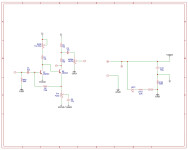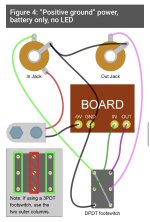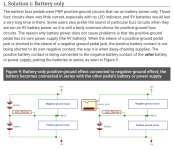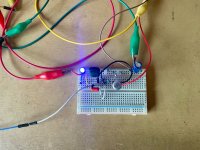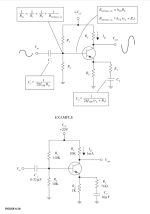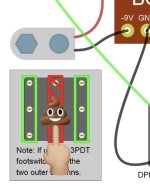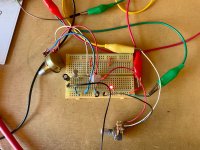owlexifry
Well-known member
the jack sleeve also goes to ground.Why would simply swapping the battery polarity affect the jacks?
if there is +9V going to ground, and therefore also the jack sleeve, this can affect other pedals in the signal chain, as all of their jack sleeves will have continuity to the same ground (via patch cables).
this is explained well here:
you might notice many pedalpcb boards that utilize PNP transistors in 'positive ground' vintage circuits are often equipped with a chargepump circuit to invert the power supply from +9V DC to -9V DC - this allows the ground to remain 0V DC/'neutral', and therefore not interfere with other pedals that might be in the signal chain.
e.g.
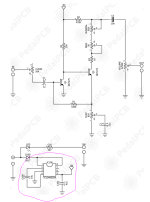
here, the segment circled in pink inverts the power supply from +9V to -9V.
for your breadboard experimentation (where you're not going to be hooking up other pedals), you can simply hook up the +9V supply to ground, as per the first example in the link above:

also, read this:
ElectroSmash - Dallas Rangemaster Treble Booster Circuit Analysis
Electronic analysis of the Dallas Rangemaster Treble Booster circuit.

